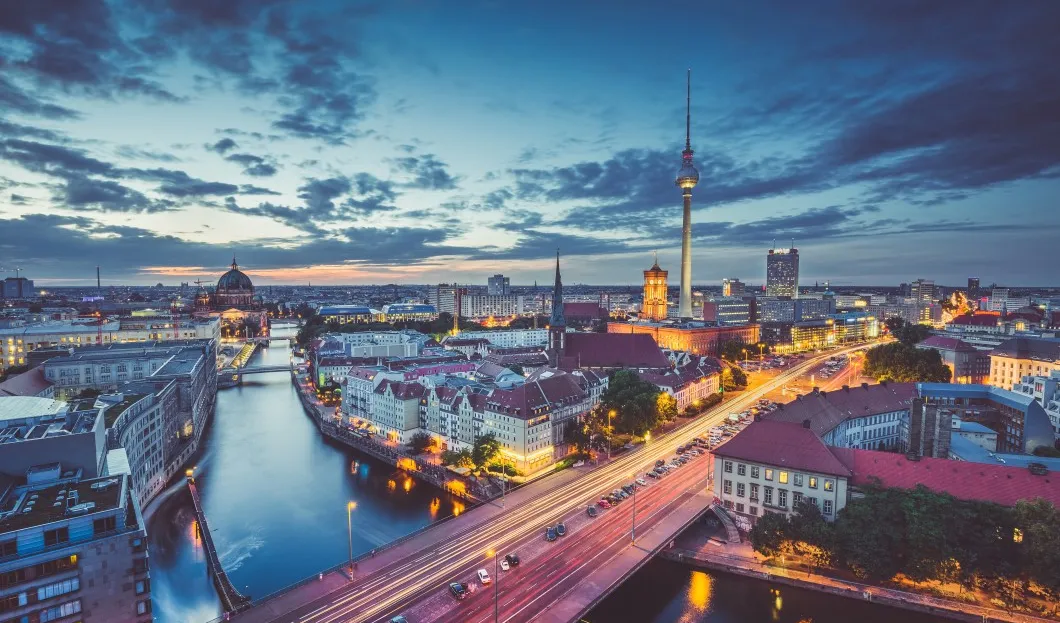
How many visitors actually come to Berlin each year? What is the amount of the tourist expenditure? The Statistical Office counted 31 million overnight stays in 2016. In the survey, however, only the guests who stay in hotels, guesthouses, and campsites are registered. All those staying in an apartment or with relatives or friends are left out.
A study commissioned by the Berlin tourism board Visit Berlin now reveals that the 31 million overnight stays at hotels are equivalent to 33.2 million overnight stays by “sleeping-sofa visitors”.
According to the study, just under five million overnight stays are attributed to tourists who have booked with private landlords. The largest group of Berlin guests are day visitors, with a total of 109 million stays. Burkhard Kieker from Visit Berlin promised that this would all be scientifically determined.
Berlin tourism has experienced high growth for several years. But not only do more guests travel to the city, they also spend a little more money than two years ago. According to the study, which also illuminates tourism as an economic factor, every visitor of Berlin has left 64.89 euros per day in the city in 2016. This is two euros more than in 2014.
For hotel guests, the amount it 205.80 euros per day. Guests, who live with private landlords, spend an average of 107.50 euros per day. If you are staying with relatives or friends, or only come to Berlin for a day trip, the cost is an average of 32.90 euros per day.
Numerous industries benefit from Berlin tourism. 5.6 billion euros per year and thus 48% of the gross turnover are attributable to the hotel industry and gastronomy. Every third euros euro is spent on retail trade by guests. According to the study, the remainder – barely 20% - is devoted to services, primarily bus and railway tickets, as well as cultural and sporting events. In terms of computing, 235 thousand Berliners live on tourism.
With all the joy of the renewed increase in overnight stays and guests, Burkhard Kieker complains about the small share of visitors outside Europe. “This is not the role of the German capital. More guests would come from Asia, North and South America if there were more long-distance flights,” the Visit Berlin managing director criticized.

Therefore, according to Kieker, the BER must be opened as soon as possible. He also criticized Federal Minister of Transport Alexander Dobrindt. As the person responsible for the granting of the right of air traffic, the Minister of Transport is responsible for the costs of Berlin and for the benefit of Munich and Lufthansa.
This concerns for example more links to China and the Arab Emirates. Air traffic is rapidly catching up on the tourism business, explained the Visit Berlin boss – in the positive as well as in the negative. The strong growth in visitor numbers from France, for example, are due to the new connections to and from Toulouse, Lyon, Bordeaux and Marseille. On the other hand, the strikers at Berlin airports at the beginning of the year and weakness of Air Berlin had slowed the development of Berlin tourism.
Another obstacle according to Burkhard Kieker are the missing congress capacities. With the City Cube on the exhibition grounds and the hotel Estrel, Berlin has only two venues for large congresses with more than 5000 participants. The top five worldwide competitors – Paris, Barcelona, Vienna and Singapore – each have at least four.
Berlin’s top tourist advertisers welcomed the decision of Economic Senator Ramona Pop to authorize Messe Berlin to build a second City Cube. Despite these adversities, however, the congress business grew. In the first half of 2017, 4.96 million congress and trade visitors (+1.8 compared to 2016) came to 64,000 events. The conference attendees stayed 3.9 million times in Berlin – an increase of 8%. Moreover, one in four hotel overnight stays is attributable to them.










